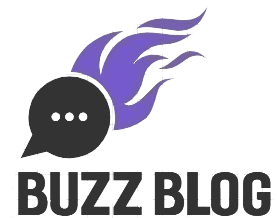Introduction
Ever feel like your team is always doing things their own way, resulting in inconsistency, errors, or wasted time? That’s where a protocolo operacional padrao (POP) steps in. Often referred to as Standard Operating Procedures (SOPs) in English-speaking countries, these documents are the backbone of efficient, repeatable, and scalable business processes.
In this complete guide, we’ll walk you through everything you need to know about creating, implementing, and maintaining effective POPs that not only streamline operations but empower your team to deliver their best — consistently.
Understanding the Core Concept of POP
The Definition and Meaning of POP
A protocolo operacional padrao (POP) is a documented procedure that outlines the exact steps necessary to perform a specific task in a consistent and safe manner. It’s all about clarity and control.
POP vs SOP: Is There a Difference?
POP is the Portuguese term for SOP. While they serve the same purpose, the terminology may vary by region or industry. But the core idea remains the same: make sure everyone is on the same page.
The Strategic Importance of Standard Operating Procedures
How POPs Drive Operational Efficiency
With a solid POP in place, team members don’t need to guess what comes next — they follow a tested, clear path. This minimizes wasted time and boosts productivity.
Benefits of Standardization Across Departments
From HR to customer service, standardization ensures everyone follows best practices. It builds a unified approach that strengthens the company culture.
Reducing Errors and Enhancing Consistency
Mistakes happen. But POPs can drastically reduce them. Clear instructions mean fewer misunderstandings and better results — every time.
Where POPs Are Applied in Business
Manufacturing and Production
Production lines thrive on consistency. A POP ensures machines are used properly and products meet quality standards.
Service-Based Industries
In customer service, delivery, or consulting, following a POP means your clients receive the same high level of service every time.
Healthcare and Safety Protocols
In critical industries like healthcare, POPs can literally save lives. They ensure procedures like patient intake, sanitation, and emergency responses are handled correctly.
Administrative and HR Processes
Hiring, onboarding, payroll, evaluations — all benefit from standardized protocols that eliminate ambiguity.
Key Components of a Well-Structured POP
Purpose and Scope
What’s the point of this POP? Who should follow it? Be specific about the purpose and who it’s for.
Materials and Tools Required
List out everything needed to perform the task: software, hardware, forms, equipment, etc.
Step-by-Step Instructions
Break it down. Use bullets or numbers. Keep steps concise and easy to follow.
Safety and Compliance Notes
Flag any legal, safety, or ethical issues involved in the process.
Review and Update Frequency
A POP isn’t “set and forget.” Schedule regular reviews — quarterly, annually, or whenever a major change occurs.
How to Create an Effective Protocolo Operacional Padrão
Identify the Process to Standardize
Start with high-impact or high-risk tasks. What processes cause the most problems? Fix those first.
Collaborate with Relevant Team Members
Involve the people who actually perform the tasks. They know the pitfalls, shortcuts, and realities.
Documenting the Steps Clearly
Use simple language. Avoid jargon unless necessary. Clarity over complexity wins.
Use Visual Aids Where Necessary
Sometimes words aren’t enough. Use flowcharts, images, or screenshots to guide the reader.
Testing and Feedback Loop
Run a trial. Gather feedback. Adjust. Repeat. Only finalize once it works in the real world.
Tools and Templates to Help You Build POPs
Free and Paid Templates
Start with ready-made SOP templates available online. Customize as needed.
Software Solutions for Managing SOPs
Platforms like Process Street, Trainual, or Notion can store, share, and track your POPs effortlessly.
Cloud Storage and Access Control
Keep everything centralized. Control who sees and edits each POP document.
Common Mistakes to Avoid
Being Too Vague or Overly Complex
Strike a balance. Don’t oversimplify — but don’t write a novel either. Aim for clarity.
Failing to Update Regularly
Businesses evolve. If your POPs don’t, they’ll become obsolete.
Lack of Training and Communication
Even the best POP is useless if no one reads it. Train your team. Make it accessible.
Training Your Team on POPs
Effective Onboarding with POPs
New hires feel lost? Not anymore. A well-structured POP makes onboarding smoother and more consistent.
Continuous Training and Refreshers
Host regular sessions. Update staff on changes. Reinforce the value of following POPs.
Auditing and Improving POPs
Periodic Reviews and Updates
Set a calendar reminder. Every POP should be reviewed regularly.
Gathering Employee Feedback
Ask the people using the POPs — what’s working? What’s not? Use that input to improve.
Incorporating Industry Changes
New regulations or technologies? Your POPs must evolve accordingly.
Real-Life Case Studies
POP Implementation in a Retail Chain
A Brazilian clothing retailer reduced staff training time by 40% and improved customer service consistency using POPs across stores.
Standardizing HR Practices in a Tech Startup
A startup created POPs for hiring, onboarding, and leave policies — saving HR 10 hours per week in repeated explanations.
Streamlining Manufacturing Through POPs
A factory reduced defects by 20% by standardizing machine operation and maintenance procedures.
The Future of POPs in the Age of Automation
Integrating POPs into Workflow Automation
POP + automation = gold. Automate repetitive steps while maintaining the human oversight described in the POP.
AI and Machine Learning in SOPs
Tools now suggest process improvements by analyzing POP usage data. It’s not science fiction — it’s happening.
POPs and Regulatory Compliance
How POPs Help Meet Legal Standards
From labor laws to environmental standards, POPs help document that your team followed the rules.
Documentation During Audits
Need to prove compliance during an audit? Your POPs are your first line of defense.
POPs as a Tool for Scaling Business
Replicating Success in New Branches
Opening a new location? Just copy your POPs and train the new team — consistency made simple.
Maintaining Quality with Growth
Growth often brings chaos. protocolo operacional padrao help keep your brand experience solid as you expand.
Conclusion
Creating a protocolo operacional padrao (POP) isn’t just about writing down a few steps. It’s about building a foundation for consistency, efficiency, and excellence in every area of your business. Whether you’re a startup or a seasoned enterprise, POPs are a powerful tool to scale operations, improve performance, and reduce chaos.

